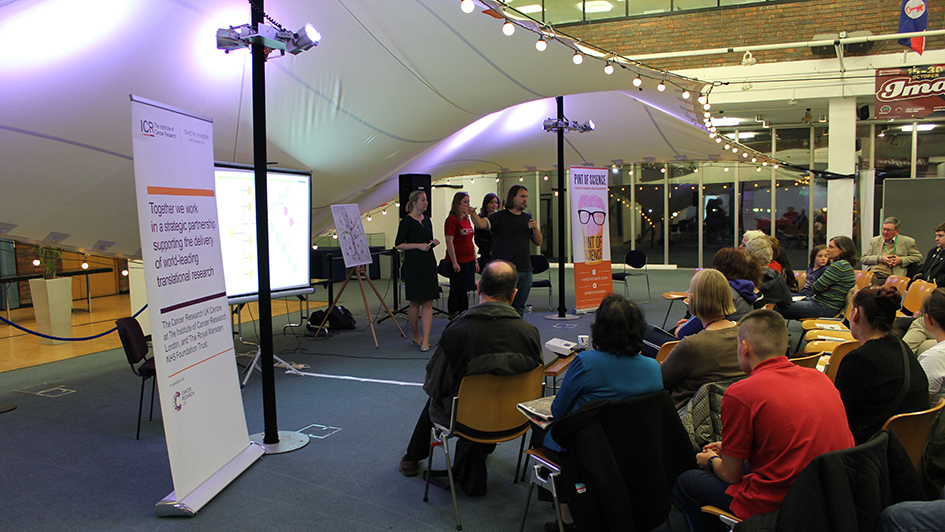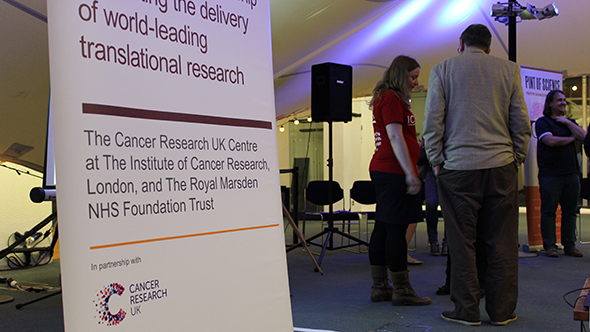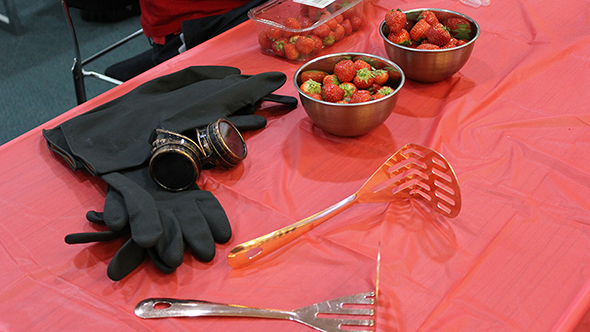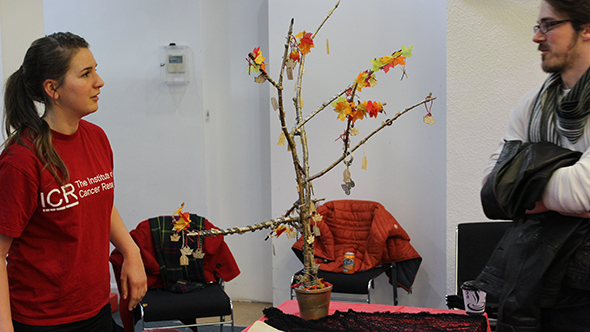
“When we [scientists] don’t know what to call something, we like to call it x... This is where our story begins…”
'PhD student Márcia Costa, in her talk, 'Seeing inside the body', at the Imagine Festival
So commenced a series of talks by scientists from The Institute of Cancer Research, London, who were invited to speak at the Imagine Festival of Arts on the evening of Wednesday 19 October 2016. The event was a collaboration with Pint of Science, who swapped their usual bar stool at the pub for Sutton library. This change in location set the scene for the theme of the night, Seeing the Future, which was inspired by the literature of HG Wells.
The first talk, 'Seeing inside the body', was given by Márcia Costa, a PhD student in the Division of Radiotherapy and Imaging. After introducing the audience to the rules and etiquette of being a scientist (see the quotation above), she guided us through the history of radiotherapy, beginning with Marie Curie and the origins of X-rays in the era of HG Wells through to the novel treatments at The Royal Marsden NHS Foundation Trust and her research at the ICR.
“There are really four dimensions, three which we call the three planes of Space, and a fourth, Time.”
The Time Machine by HG Wells
We dabbled in the fourth dimension, time, in the next talk, as Dr Benjamin Werner, a postdoc from the Division of Molecular Pathology, took the floor to discuss his role as a theoretical physicist at the ICR.

As he explained to the audience in his talk, 'Predicting the path of cancer', his challenge was to ‘see the future’ — no mean feat then! He spoke about his computational work modelling the path of mutations in the progression of cancer. He went on to explain how these computer models could be extrapolated to predict the subsequent mutations a cancer may acquire and highlighted the importance of this knowledge in choosing appropriate treatments for patients.
“But I’m invisible. You see? Invisible.”
The Invisible Man by HG Wells
The final talk of the night was given by the ICR's Dr Emily Grist, who presented research on tumour DNA found in the blood of men with prostate cancer.
She described how genetic alterations occurring early in the development of this disease and circulating fragments of tumour DNA are difficult to spot — much like the protagonist, Griffin, in The Invisible Man.
Dr Grist also spoke about how ‘rapid autopsy’ programmes are being developed. In this procedure, tumours in a patient can be removed post mortem and may be swiftly sequenced. She explained how this entirely selfless act is allowing researchers a greater understanding of cancer heterogeneity.
“steampunk: (noun) A style of design and fashion that combines historical elements with anachronistic technological features inspired by science fiction.”
In addition to the talks, steampunk activities were available for guests to get 'hands on'. For the uninitiated, the world of steampunk is a mash up of futuristic science fiction and 19th century steam-powered industrial revolution — think Doctor Who meets Isambard Kingdom Brunel.
This provided an appropriate backdrop to the HG Wells-inspired theme of the night, 'Seeing the Future'. The audience were invited to extract DNA from strawberries using some eclectic Victorian-esque laboratory equipment.

They were also able to decorate a leaf with patterns for display on a kooky steampunk ‘evolution tree,’ which served as an analogy for the branching mutations which occur in cancer. Furthermore, the work of researchers at the ICR provided inspiration for a local artist, Tia Arberry, who presented her artwork at the Pint of Science evening.
For me, the evening had moments of humour, edification and sentimentality and I believe it succeeded in engaging both young and old alike. I felt very privileged to work among the team of volunteers under the guidance of the public engagement team, who did an outstanding job at coordinating both the lead up to the event and the night itself.

HG Wells wrote his novels in an era when the pursuit of scientific knowledge risked eclipsing the compassion and humanity of mankind. Indeed, this was an overriding theme in much of his work, from The War of the Worlds, to The Invisible Man.
However, the talks from the Pint of Science evening demonstrate that the pursuit of knowledge and the compassion of the ICR researchers go hand-in-hand in the fight against cancer. It is this union of care and scientific expertise which will drive cancer research as it ventures into the future.
comments powered by